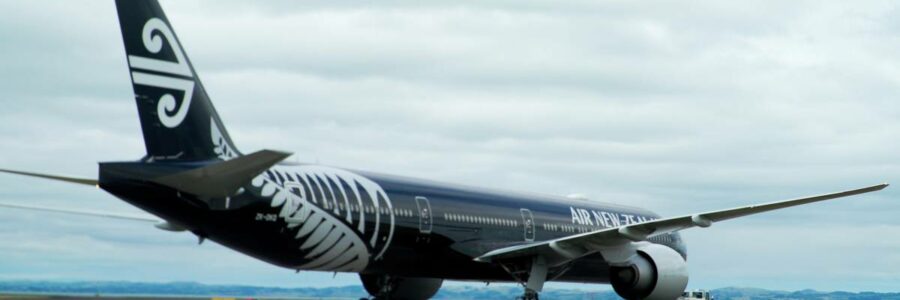
No quick relief for big-paying cargo shippers in return of aviation
More aircraft are coming to New Zealand thanks to the easing of border restrictions – but that’s unlikely to bring a reprieve for importers and exporters paying through the nose for freight space on ships.
The global sea freight snarl with its associated high shipping rates will have to straighten out before the air freight business returns to anything like normal, said Don Braid, managing director of New Zealand-based global transport and logistics heavyweight Mainfreight.
“They’re different issues. You’ve got port congestion, shortage of equipment, space allocation [issues] and large sea freight volumes continuing for some time to come. An increase in air freight space availability is not necessarily going to fix the sea freight problem.”
Braid said it’s a Catch-22 situation.
“Planes that were able to take more freight [during Covid lockdowns and restrictions] and through the Government-subsidised freight scheme are now likely to have full flights and won’t perhaps be back to their full network.
“It’ll be a wait-and-see process in my view.”
President of the Customs Brokers and Freight Forwarders Federation Chris Edwards agrees the correlation between air freight and sea freight rates is not clear-cut.
Capacity will be the game changer, he said.
“Traditionally clients turned to sea freight when air freight rates got high, but you could argue the reverse has been true this time. Indeed we even saw shipping lines purchase air cargo airlines themselves. Again, I think capacity is the answer to the cost of sea freight and I do expect to see more of that available in Q3 and Q4 this year.”
Edwards is anticipating transtasman air freight rates will drop given the increase in capacity between the two countries. However that situation may be countered by an increase in fuel prices because of the Russia-Ukraine conflict, he said.
Rates charged by shipping lines since the pandemic outbreak have soared.
Pre-pandemic, shipping a TEU (twenty-foot equivalent unit) container to Shanghai cost around US$800 ($1180). Today it costs around US$6400 ($9446), said Edwards.
China is New Zealand’s biggest export market.
Shipping a TEU to Hamburg, Germany, in 2019 cost around US$1000 ($1475) – now expect to pay US$5000 ($7379).
A TEU to Long Beach, California, used to cost US$2000 ($2900) – now it’s around US$10,000 ($14,7000) – but good luck even finding a spot, said Edwards.
He emphasised figures were approximate because “it’s a demand-led, ad hoc market, especially the US”.
Air-freight rates, charged on a per kilogram basis, have climbed too.
Shanghai: Was US$3 – now US$9/kg
Frankfurt: EUR 3 – now EUR 9/kg
Los Angeles: US$2.50 – now US$5.50/kg
Edwards said demand for air freight space is already higher than in 2019, as confirmed by the International Air Transport Association.
More flights in and out of New Zealand would allow exporters to get back to developing their market share and, in theory, reduce the cost of import, he said.
“We should start to see a steady stream of airlines announcing a return to NZ post-July if they have confidence that the decisions are irrevocable.
“Again, I think capacity is the answer to the cost of sea freight and I do expect to see more of that available in Q3 and Q4 this year. This all presumes that demand for our exports and imports remains high.”
Mainfreight’s Braid said New Zealand cargo owners had not done too badly in terms of air space in the freight congestion crunch.
“Most of the airlines have done a very good job to continue freight services to and from New Zealand. An increase of air freight space availability is not necessarily going to fix the sea freight problem.
“In some respects, because of sea freight congestion, an amount of what would normally have been sea freight found itself on air freight and air charters and the like.
“Once we see some normality in the sea freight sector it will ease problems around air freight space availability and we can get back to normalised air freight.”
Source: Read Full Article